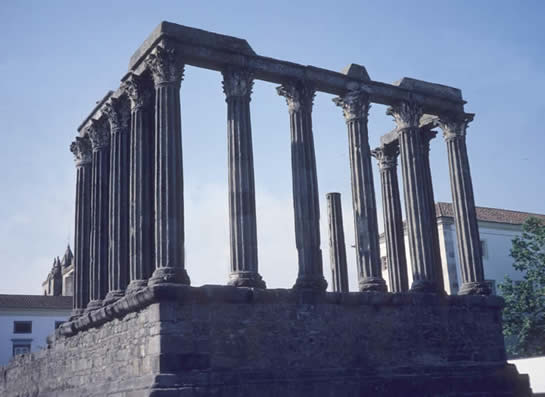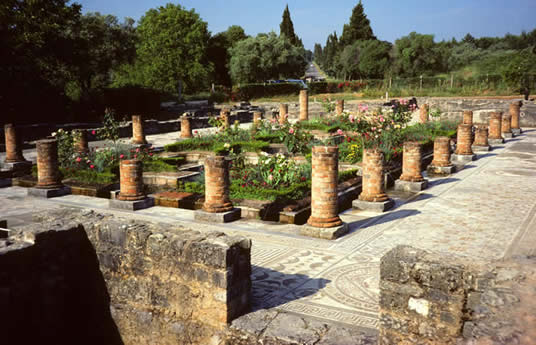Roman Portugal
By L.A. CurchinPortugal contains numerous Roman remains. There was no country named Portugal in ancient times, though the name Portugal is derived from a Roman town Portus Cale "Cale Harbour", located near modern Oporto. In Roman times, most of what is now Portugal was located in the province of Lusitania, which also included part of western Spain. The modern capital, Lisbon, overlies the Roman port of Olisipo, which was commercially important and preserves the remains of a Roman theatre, but was not a seat of government. The Lusitanian capital, Emerita Augusta, was not even on Portuguese soil. However, the seats of several conventus (judicial districts) were located here. Scallabis (modern Santarém) and Pax Julia (Beja) were conventus capitals of Lusitania, while Bracara Augusta (Braga in northern Portugal) was a conventus centre for the neighbouring province of Callaecia. Unfortunately, these cities have few surviving Roman remains. However, there are other sites where evidence of the Roman occupation is more visible.
Evora (ancient Ebora) is a charming town in eastern Portugal that boasts not only segments of its Late Roman city wall but also one of the best preserved temples in the Iberian Peninsula (fig. 1). This temple, which stood in the forum, was flanked by 26 fluted granite columns with white marble capitals in the Corinthian order. Though traditionally labelled "temple of Diana", it was probably dedicated to the Imperial Cult. It dates to the late first or early second century AD. The temple was used as a meat market until 1870 and thus escaped destruction. Evora was clearly a place of some importance, since ancient inscriptions from here name several Roman senatorial families
.
Figure 1
However, the best preserved Roman city is Conimbriga, situated a short distance from modern Coimbra which perpetuates its name. Conimbriga was a pre-Roman town that underwent extensive remodelling in the time of Augustus, including a forum, public baths, and an aqueduct that brought fresh water from a source three kilometres away. The forum conformed to the layout recommended by the architectural writer Vitruvius, including a temple on the north side, a basilica (lawcourt) on the east, and shops on the west. This forum was replaced by a more complex one, on two levels, in the Flavian period, when Conimbriga received the official designation of municipality.
Although only the foundations of Conimbriga's forum buildings survive, several elegant town-houses are largely preserved. The most famous of these is the "House of the Fountain". Its peristyle garden (fig. 2) contains six scalloped-edged flowerbeds grouped around a large central pool. An elaborate system of pipes and spouts delivered flowing water into the pool. The four sides of the peristyle are paved in multicoloured mosaics in geometric, floral and figured designs. At intervals are mosaic "medallions" depicting famous scenes from mythology: the Minotaur in the Labyrinth, Actaeon being eaten by his hounds, Perseus showing the head of Medusa to the sea-monster, Bellerophon battling the Chimaera.

Figure 2
The ancient countryside was dotted with villas: large, prosperous farms whose owners lived in luxurious rural houses. A splendid example is São Cucufate near Beja. Excavations here have revealed a villa of the first century AD, refurbished with a peristyle courtyard in the early second century. The villa was completely rebuilt in the fourth century, and continued in use as a monastery through the Middle Ages. It was a two-storey residence, but also part of a working farm. A series of vaulted rooms in the centre of the lower level may have been used for storage, while the family probably lived on the upper floor. In the outbuildings have been found workshops, presses, baths and servants' quarters.
The coastal towns were famous in Roman times for their production of salted fish and garum (fish sauce). Garum amphoras from this region are found in many parts of the Empire. The site of Tróia, in the estuary of the river Sado near modern Setúbal, is famous for its ancient fish-salting tanks, stretching four kilometres along the shore.
For more information you may visit these English-language websites:
www.conimbriga.pt/
www.360portugal.com/Distritos.QTVR/Beja.VR/ruinas/S_Cucufate/